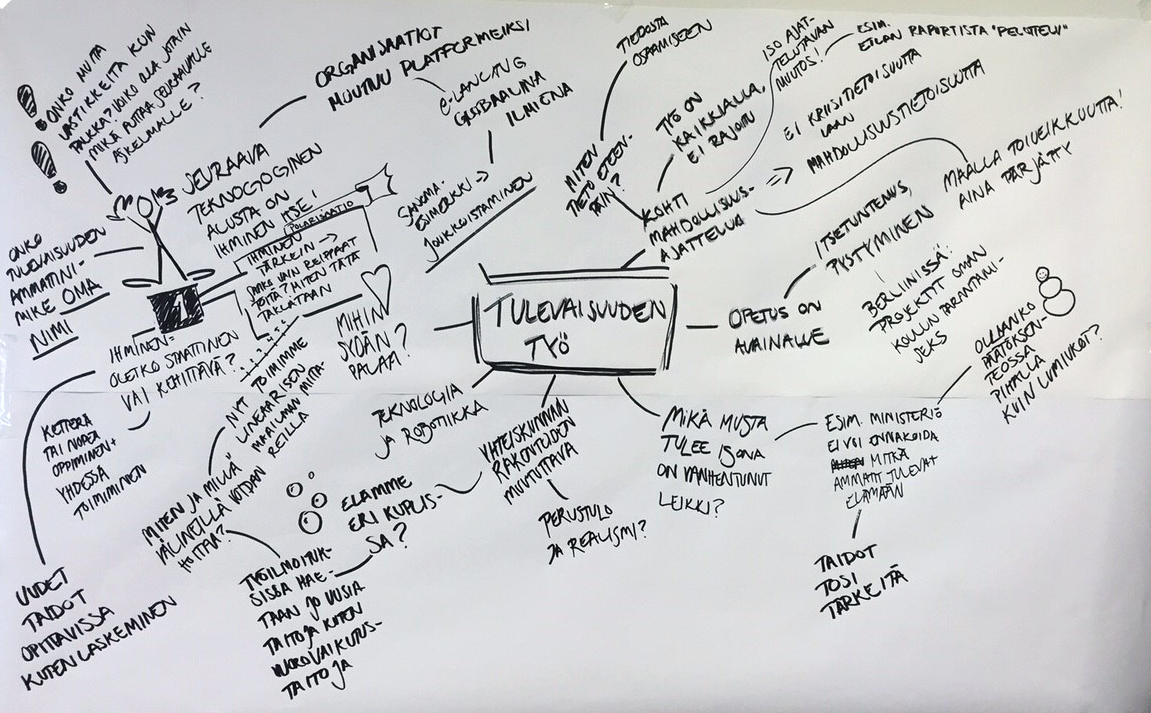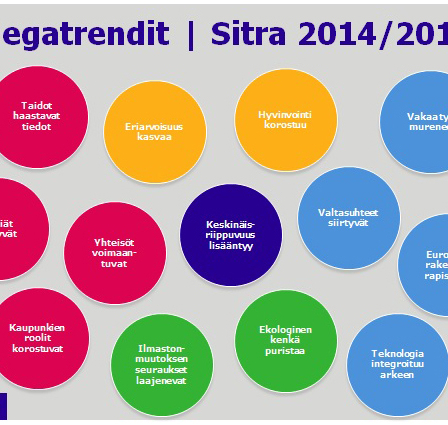For one third of us, work will change radically within the next couple of decades. Do you already have a plan B?
It is crystal clear that working life is undergoing a radical transition. The amount of mid-level salaried work is decreasing, while new jobs appear with painful slowness, but in different sectors. Working life and careers have become even more fragmented than before and atypical employment relationships are an everyday occurrence.
“Jan Owen, the leader of the Foundation for Young Australians, believes that young people are unprepared for a working life that may include five career changes and, on average, up to 17 different jobs,” says Kirsi Juva of Como Helsinki, speaking at the National Foresight Network’s Foresight Friday event on Friday 28 August. We live in a world where education prepares people for working life of a certain kind, but the reality is not so linear. “In the future, more and more people will not be paid employees or entrepreneurs, but something in between,” Juva adds.
Plan A, B, C…
Familiar trends are the cause of this upheaval and technological development is one of the major culprits. According to a study by the Research Institute of the Finnish Economy (ETLA), this trend will threaten as much as one third of jobs within the next 20 years. This means that around 30 per cent of people should be considering alternatives to their current jobs.
Digitisation has led to upheaval in many industries, including the media industry: artificial intelligence can be used to write news articles that are close to the real thing and people are no longer required for many other media jobs (in Finnish).
The “What’s your plan B?” groups appearing on Facebook are an eye-opening sign of this transition. Via these groups, you can share your experiences and ideas on how you managed to become self-employed or find a new job after being let go.
“Some time ago, a discussion was held on whether we should create a similar group in Finland for former journalists. The question arose: should we allow other media professionals to join? And what about other sectors? In the end, someone pointed out the need for a similar group in nearly every sector,” Juva recounts.
So how might we make the consideration and implementation of plans A and B as painless and natural as possible? According to Juva: “the question about a primary and a secondary plan is slightly misleading. Instead, you should ask: what do I want to do over the next three years?”
The list of core competencies of today’s (and tomorrow’s) employees is familiar: you need to know how to productise your personal know-how and improve your co-operation and communication skills. Practising these skills could ease the jump from one sector to another.
Another list item consists of being skilled at asking the right questions and having the courage to try out new things. During the discussions at the Foresight Friday event, one particular skill stood out: the ability to see employment opportunities where there seem to be none at first. We should move from crisis awareness towards opportunity awareness.
Do structures support change?
While most of the workforce consists of paid employees or entrepreneurs, phenomena such as the crowdsourcing of work look set to increase. People can already be found online to perform a variety of tasks for a fee.
Working life will look very different in such a world. The challenging question is this – do our social structures support working in such a world?
This autumn, at the National Foresight Network’s first Foresight Friday event, a group of experts in foresight and working life convened to discuss the future of working life. You can find more information on the activities and monthly events of the Foresight Network on the foresight.fi website. Within its “Turning points in working life” focus area, Sitra is also exploring solutions to the transition under way in working life (in Finnish).
Weekly notes is a summary of topical issues from Sitra’s strategy and research team. Our Weekly Notes are gathered together here.



Recommended